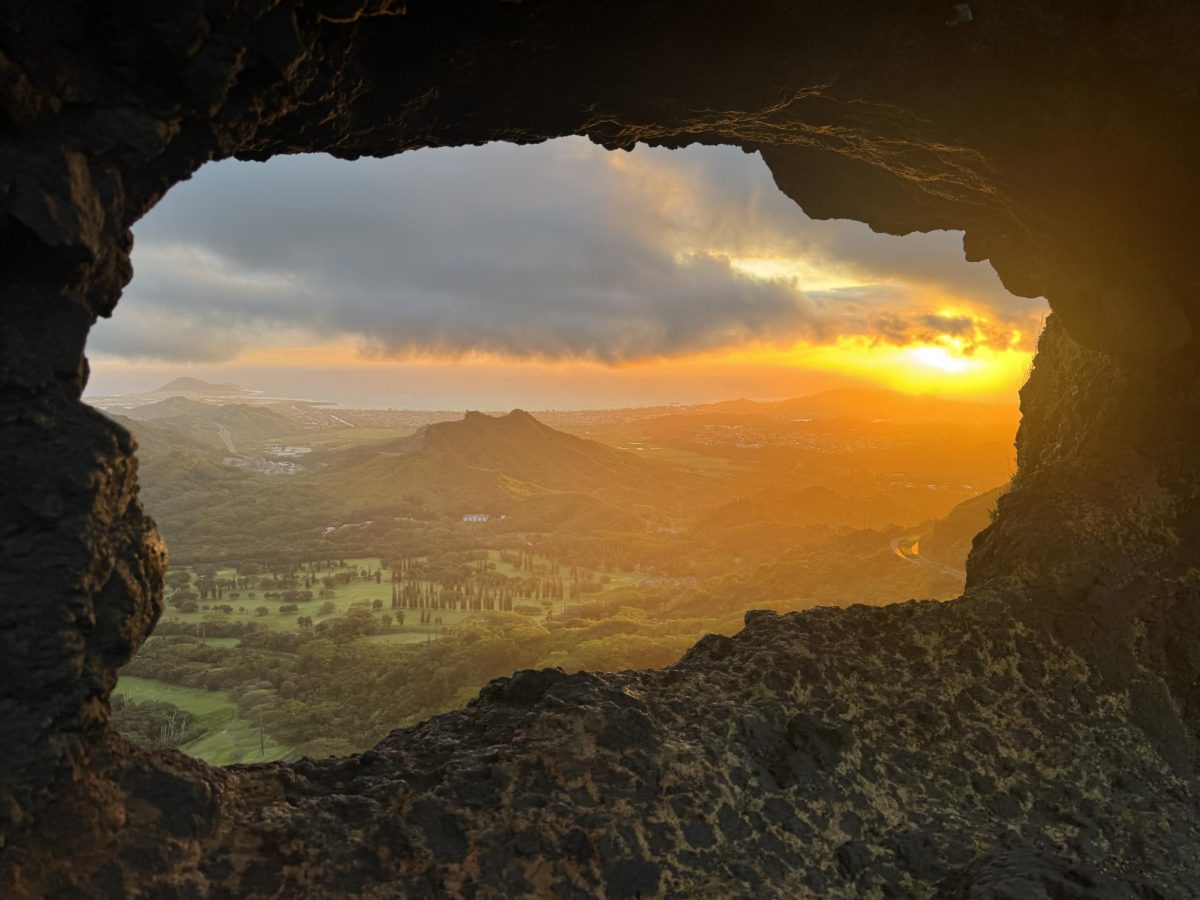I used to think getting lost was the worst thing that could happen on a hike, until it happened to me.
I learned this firsthand while hiking the Stairway to Heaven trail on Oʻahu. It was my second time doing the hike. I went with my teammate, Sameera Elmasari, and we planned to take the shorter neighborhood entrance to avoid the long back route. The dilemma was that the hike was illegal, and a police officer was usually stationed at the entrance. We thought we could have beaten him by showing up at 5 a.m., but he was already there, waiting for us. He not only turned us away but followed us all the way out of the neighborhood.
We could’ve given up. Instead, we got creative. Next to the neighborhood was a community college, separated by a tangle of brush, marsh, and a barbed-wire fence. We climbed over and found ourselves in an overgrown brush area that lacked a trail. For nearly a third of a mile, we hiked on slanted ground through tangled vegetation, unsure if we were going the right way. We got lost multiple times trying to navigate through that mess, but eventually, scratched up and laughing, we stumbled onto the start of the trail.
Looking back, that chaotic detour was one of the best parts of the hike, besides the killer views. It wasn’t just about finding our way again; it was about the moments in between. The confusion, problem-solving, and sense of teamwork were what made it special. Getting lost forced us to rely on each other, to laugh through the uncertainty, and to appreciate the process instead of just the goal. It reminded me that sometimes the best parts of an adventure aren’t when everything goes smoothly, but when things go sideways.
“I think that’s the beauty of hikes and really anything in life,” Elmasari said. “It’s more about the experiences and the adversity you face on the journey rather than the final destination.”
Of course, there’s a limit to how much “getting lost” can be considered fun. There’s a difference between a harmless wrong turn and a situation that requires search-and-rescue or a helicopter. No view or adventure is worth putting yourself or others in danger. The kind of getting lost that makes a hike memorable is the kind that challenges you just enough to test your patience, teamwork, and problem-solving, not your survival skills. It’s about stepping outside your comfort zone, not off the map entirely.
Normally, one plans for a steady climb, winding trails, and a rewarding view at the end. They plan the route or check the weather, but anyone who hikes often knows that things rarely go perfectly according to plan. Trails are confusing, maps are vague, and sometimes, the universe seems determined to test your sense of direction; that’s my favorite part. Getting lost on a hike might sound stressful, but it’s often the part that makes the adventure unforgettable and the part that is most talked about.
Getting lost forces you to stop hiking on autopilot. When you think you know exactly where you’re going, it’s easy to tune out details; your mind drifts to how many miles are left, how steep the incline is, or what song to play next. But the moment you lose the trail, everything shifts. You become fully alert. You start scanning your surroundings, noticing small details you’d otherwise miss. You stop thinking about the endpoint and focus entirely on your current location. In a world that’s so controlled and predictable, that feeling of uncertainty is rare and surprisingly refreshing.
“Getting lost makes it memorable because it really trauma bonds each other,” said Alyssa Schuetze, a frequent hiker. “It was a lot more memorable than just having it run smoothly.”
